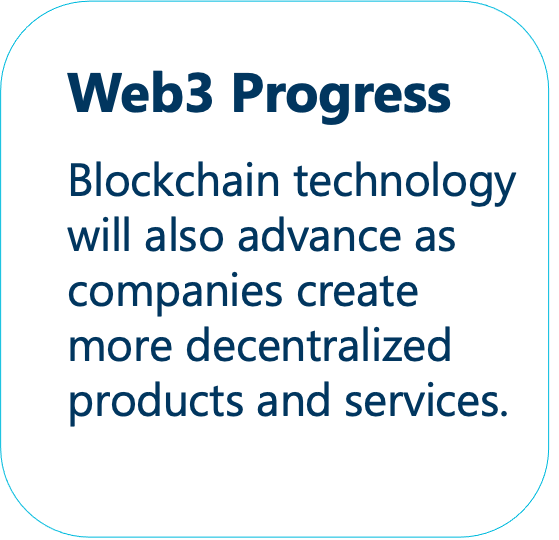The 25-year transformation of employee training and development

By Nat Emery
CEO and Founder of LearnSpectrum
This year marks the 25th anniversary of my founding of LearnSpectrum, a provider of training management services. Over these last 25 years, we’ve seen quite the transformation in employee training and development.
For those of you who have been in learning and development (L&D) for a while – and even those of you new to the space – let’s take a trip back in time to see what’s changed.
Be prepared to shake your head and even laugh a little. I’ll even challenge you to share your own memories.
To set the stage: What technology looked like in 1998 versus 2023
1998






Source: Computerhope.com “1998 history”


2023






Source: Forbes “The-top-10-tech-trends-in-2023-everyone-must-be-ready-for”
Employee training expenditures, subjects, and tools were also very different back then
ATD’s 1998 State of the Industry Report
Training expenditures were devoted to:

The 5 most common course content provided were, in descending order:
New employee orientation
Management-supervisory skills
Computer literacy and applications
Job-specific technical skills
Occupational safety and compliance
Training Formats
Instructor-led and self-based training were the primary method, using videotapes, workbooks, business books, audiotapes and basic computer-based training.


ATD’s 2022 State of the Industry Report
Training expenditures were devoted to:

The 5 most common course content provided were, in descending order:
Managerial and supervisory
Interpersonal skills
Mandatory and compliance
Profession- or industry-specific
New employee orientation
Training Formats
Instructor-led learning that now include virtual classrooms and teleconferences, Technology-based learning such as self-paced using computers, mobile devices, and digital media.
A note about course content in 1998: The growing use of computers created a need for skilled workers
Back in 1998, you saw ‘computer literacy and applications’ rank 3rd but not rank at all in the top 5 in 2023.
That was driven by the growing use of computers in the workplace that required employers to provide training for their workforce on the new technologies. (Source: TrainingZone)
That type of training was a serious time investment, though.

For example, getting the much coveted ‘official’ Microsoft Certified System Engineer for Windows NT 4.0 Certification took 30+ days of training to achieve, depending on the electives versus the boot camps involved. Just for starters, candidates had to pass six exams: one exam from each core requirement group and two elective exams.
If you had the MCSE NT 4.0 Certification, though, you dramatically increased your marketability as companies fought with each other for your employment, so it was worth the investment.

A deeper dive into “old school” training formats
Videotapes, workbooks, and basic computer-based training. Not only were topics different in 1998, but training formats were also very “old school”. In the late 90s and early 00s, eLearning had only just been defined as a concept, and the Learning Management System was just starting to gain popularity. So, for most employees, training was almost always instructor-led and in-person. If you weren’t near a major city, you had to factor travel and expense costs into your budgets … And you had to find room in your luggage to bring back those huge training binders.
Some lucky employees that had active training and development support in their company did have some self-paced training, but it was in the form of a CD-ROM or video library at the main office like the Blockbuster stores of old. Further, the self-paced training was only one-sided without any interaction … and you can forget about graphics and simulations.
If those options weren’t available, employee training and development was in the form of those yellow and black ‘for Dummies’ books that you’d pick up at Borders, Barnes & Noble, or some other ‘walk-in’ bookstore.
Procuring training was very manual, too. Today, we have fully online procurement experiences, but back in 1998 the internet was not a major B2B player (yet). So, training contracts were faxed, mailed, or overnighted to us. Convenient and secure, right?

Sound familiar, or are you shaking your head in disbelief?
Navigating training options had its own transformation
Changing gears, let’s consider how finding training has changed.
In 1998, Washington DC and the surrounding area had so many training companies, but no one knew who the reputable training leaders were. It was very confusing.
It’s why we established LearnSpectrum. We wanted to help students find their desired training, but procure it another way, with us doing the research and the administration … and along the way, had a front-row seat to the evolution of the most requested IT and technology training.
| 1998 | 2002 | 2010 | 2015 | Today |
|---|---|---|---|---|
| In the beginning, the focus was MCSE (that certification I mentioned) and ICND (Interconnecting Cisco Networking Devices), which wasn’t too challenging. …and lots of Microsoft Office 97 Word, Excel, PPT and Access. | Finding vendors that had a running schedule for dBase and Novell on the technical side were getting tricky, as was finding obscure training like WordPerfect on Macs. | Fast forward a few years and we were helping students secure Sun Microsystems Java training and Oracle 8 DBAs. Who knew one day those two companies were going to eventually get together. | Old courses included in general ED curriculum and word processing, spreadsheets etc. are now expected knowledge or self-paced. And that old MCSE, well my high school has offered that and its newer versions for at least the last 20 years. | Its still Sec+, CISSP, and anything from DoD8570.ts still Sec+, CISSP, and anything from DoD8570.
Today we can see where technology is headed, but still short the manpower to fill all rolls.
Training still a must and learning the traditional way with V-ILT or ILT… but self paced is gaining |
Today, employee training and development is fast tracking
Ethical hacking, intrusion detection, red team, pen testing, boot camps, virtual live, online self-paced subscriptions all are in fashion. We even have predictive learning based on how you score on the class you took and what it suggests is your natural next learning path.
Yet, there’s one thing that still seems to be missing that can’t be sourced yet … patience for learning. We now have AI assisting nearly everything because someone else figured out a better way to do something. So, learning isn’t as popular when you can find an app or open-source code to achieve the needed goal.
My Challenge to you: What is the funniest memory you have of your ‘ole days’?
I’d love to hear about your experiences for whatever timeframe was your ‘ole days’.
Simply provide a comment at the end of the blog!
By way of example, my college-aged kid assumes his phone apps are all he needs. How to drive from A to B, what is news, etc. … and that the internet is always right. Someday, for laughs I’ll see how well he can:
- Read a paper map, then fold it back up
- Look up a phone number in the paper copy of a yellow pages
- Use a rotary dial phone (incidentally, I asked Chat GPT how to use a rotary phone, see the inset box below to learn how)
- Use anything that doesn’t need wi-fi or cell service to give him the information
How DO you use a rotary phone?
Here’s a step-by-step guide according to ChatGPT:
| 1 | Pick up the receiver: Lift the handset off the phone base. |
| 2 | Listen for a dial tone: After picking up the receiver, wait for a dial tone, which indicates that the phone is ready for you to make a call. If you don't hear a dial tone, check if the phone is properly connected to the phone line. |
| 3 | Dial the phone number: Insert your finger into the first desired number's corresponding hole on the dial. Turn the dial clockwise until it reaches the finger stopper. Then release your finger and allow the dial to return to its original position. Repeat this step for each digit in the phone number. |
| 4 | Wait for the call to connect: After dialing the complete phone number, wait for the call to connect. You may hear ringing or other tones while the call is being established. |
| 5 | Have a conversation: Once the call connects and the other party answers, you can have your conversation as you would with any phone. Speak into the receiver and listen through the earpiece. |
| 6 | Hang up the phone: To end the call, simply hang up the receiver by placing it back on the phone base. This action will disconnect the call. |
Also, keep in mind that rotary phones do not have features like call waiting, call forwarding, or speed dial. Also, if you make a mistake while dialing, you’ll need to start over from the beginning.
Rotary phones aren’t very common nowadays, but they can still be found in some places as nostalgic artifacts or decorative pieces…in fact, I found a working rotary payphone in rural Maine at PINDROP.
Why train when you can Google?
So, back to employee training and development being fast tracked. What took thousands of dollars and hours to learn, practice, and implement can be now found immediately, and free, somewhere.
Just think about how often you Google how to do something?
If the topic isn’t free already, it may very well be soon. And the time to convert your knowledge into practice is nearly as fast as people are usually in the process of doing something when they consult Google for help.
Applying knowledge still takes maturity, greater study, or next level training found through professional development. YouTube clips and AI haven’t conquered that yet, but it might be around the corner.
A final thought on employee training and development today
According to the eLearning Industry, there are seven core trends that are shaping the global landscape of employee training and development in 2023.
7 Corporate Learning Trends in 2023
- Remote Work and Virtual Training
- Gamification and Interactive Content
- Personalization and Individualization
- Microlearning and Bite-Sized Content
- Cultural Competency and Diversity
- Constantly Updated Training and a Flexible Learning Platform
- The Shift Toward Learning Experience Platforms
New learners are bored with they way new learners 20 years ago gained professional knowledge. New learners want ‘better experiences’. Engaging learners by making a game of the content, receiving badges or level completions. Looking at any source and getting instant gratification towards the answer, and maybe we skip the process and cut to the chase.
The next 25 years will accelerate faster than the last
What does the future look like for employee training and development?
I’d say now is where the swing is happening. Future workforce generations will have to re-identify what workforce maturity means. Can they wait for information? Learn it from a book, take a college semester course, or a professional training class?
Will the technologies be giving training away as a method to customer loyalty? What worked over the last 25 years might have been cutting edge at the time, but the accelerant for change in that training format hasn’t multiplied nearly as fast as it is now. We don’t necessarily need a traditional degree anymore. A digital badge will do.
One thing is for sure, the next 25 years will accelerate faster than the last. So, start every conversation with how AI can be introduced to your workforce. Think about compliance as the norm – CMMC, DoD8140 are the new buzz words. Train for answers, not knowledge as newer generation finds answers instantly.
Have questions or thoughts?
If you have a question or just want to shoot the breeze about employee training and development, please drop me an email at nemery@learnspectrum.com and/or feel free to find me on LinkedIn. I’d welcome the opportunity to connect with you.
Nat Emery
CEO and Founder of LearnSpectrum

